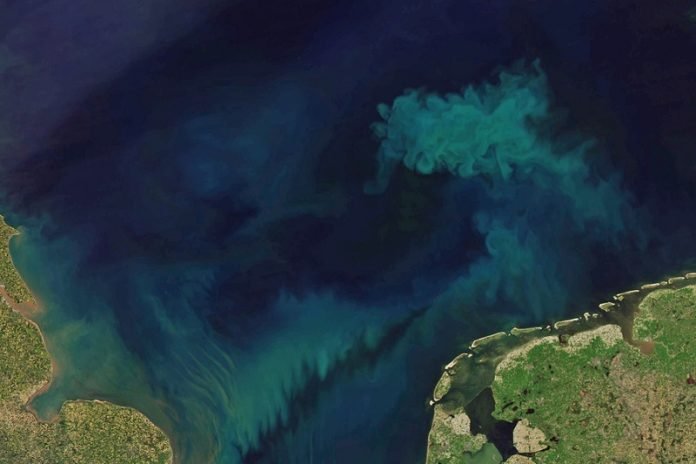
Scientists at MIT, the National Oceanography Center, and other institutions have made a significant discovery about the impact of climate change on the world’s oceans.
Over the past two decades, there has been a noticeable change in the color of the oceans, affecting 56% of the Earth’s marine expanse.
These shifts in color, although subtle to the human eye, indicate a transformation in the ecosystems within the oceans.
This groundbreaking study, published in Nature, highlights the influence of human-induced climate change on these ecological changes.
The color of the ocean serves as a visual representation of its upper layers and the organisms present within them. Deep blue waters typically indicate a lack of life, while greener waters suggest the presence of ecosystems, primarily phytoplankton—microbes that contain the green pigment chlorophyll.
Phytoplankton play a vital role in the marine food chain and the ocean’s ability to absorb and store carbon dioxide. By tracking changes in ocean color, scientists can monitor and understand the response of these essential communities to climate change.
In the past, detecting climate change’s influence on marine ecosystems solely through measuring chlorophyll levels proved challenging due to natural variations from year to year.
However, researchers discovered that by examining changes in other ocean colors beyond chlorophyll, the climate-change-driven signals would become more apparent.
Utilizing satellite data from the Moderate Resolution Imaging Spectroradiometer (MODIS), which measures ocean color in seven wavelengths, researchers conducted a statistical analysis over a 20-year period to uncover significant trends.
The team’s analysis revealed a clear trend in ocean color changes that exceeded natural year-to-year variability.
By comparing their findings with a model that simulated Earth’s oceans under different greenhouse gas scenarios, researchers concluded that the observed changes were consistent with anthropogenic climate change.
These alterations in ocean color have implications for plankton communities, which serve as a critical food source for various organisms.
Additionally, the ability of the ocean to absorb carbon dioxide will be affected since different types of plankton have varying capacities for carbon capture.
Monitoring ocean colors beyond chlorophyll levels provides scientists with a faster and clearer method to detect climate-driven changes in marine ecosystems.
These findings emphasize the importance of taking climate change seriously and understanding its effects on our oceans. As the color of the oceans continues to change, it signifies shifts in plankton communities and will impact the entire marine food web.
Furthermore, the ocean’s capacity to absorb carbon dioxide will be altered. This research calls for immediate action to mitigate the causes and consequences of climate change.
The study’s groundbreaking findings highlight the changing colors of the world’s oceans as a result of human-induced climate change.
By examining shifts in ocean color beyond chlorophyll, scientists can detect ecological transformations occurring within marine ecosystems.
The implications of these changes are far-reaching, affecting the marine food chain and the ocean’s ability to mitigate climate change by absorbing carbon dioxide.
It is crucial that we acknowledge and address these changes, working collectively to protect and preserve our oceans and the delicate balance of life they sustain.
Follow us on Twitter for more articles about this topic.



